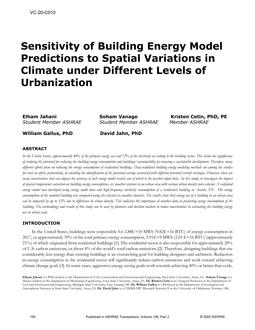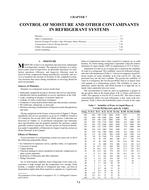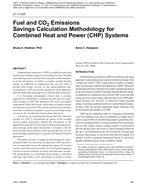The residential air-source heat pump is an air conditioning unit that has been modified to transfer heat in two modes. During the summer, the heat pump performs the same job as an air conditioner. In the winter, the heat pump extracts heat from the cold outside air and releases the heat inside the living space. The popularity of the heat pump has come from the fact that it can transfer over three times the energy that it consumes and save the consumer utility dollars ovejr .electric resistance heating. The increasing costs of electricity during the seventies and the threat of Federal efficiency standards encouraged manufacturers to improve the efficiency of heat pumps as well as other residential appliances. Research in the 1970’s led to the development of steady state heat pump computer design models that have been used to greatly improve the heat pump’s steady state efficiency. While the understanding of steady state performance has greatly improved, the heat pump transient effects, which include cycling, frosting of the outdoor coil, and defrosting of the outdoor coil, are much more difficult to characterize and are still not well understood. The objectives of this research were to: (1) characterize the reverse cycle defrost of the air-to-air heat pump, (2) examine the effect of different expansion devices on the performance of the heat pump during the defrost cycle, and (3) evaluate the effect of several alternative defrost strategies on improving the defrost cycle.
Product Details
- Published:
- 1989
- Number of Pages:
- 145
- File Size:
- 1 file , 3.2 MB
- Product Code(s):
- D-RP-479


